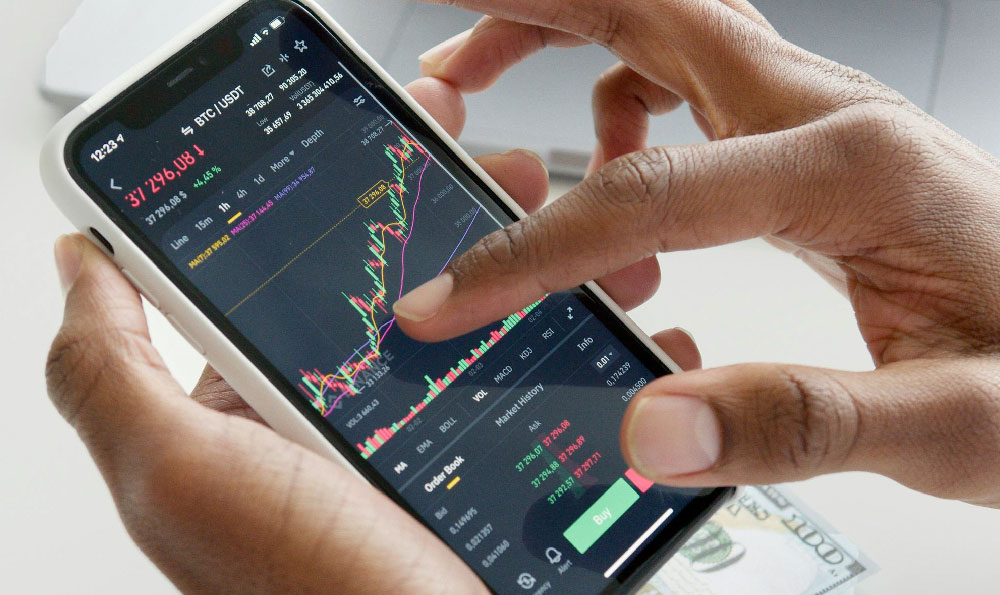Mastering Stop-Loss Orders on BitMEX: A Comprehensive Guide
BitMEX, a leading cryptocurrency derivatives exchange, offers sophisticated tools for traders looking to leverage market volatility. Among these tools, the stop-loss order stands out as a crucial risk management strategy. Understanding how and when to use stop-loss orders on BitMEX can significantly protect your capital and improve your overall trading performance.
What is a Stop-Loss Order?
A stop-loss order is an instruction to automatically execute a market order when the price reaches a specified level. This level, known as the stop price, is set by the trader. The primary purpose of a stop-loss order is to limit potential losses on a trade. For example, if you hold a long position (betting on the price to increase), you can set a stop-loss order below your entry price. If the price drops to your stop price, the order will be triggered, selling your position and preventing further losses. Conversely, for a short position (betting on the price to decrease), the stop-loss order is placed above your entry price.
How to Set a Stop-Loss Order on BitMEX
BitMEX offers several ways to set stop-loss orders, each with its own nuances. Here’s a breakdown:

-
Stop Market Order: This is the simplest type. You specify a stop price, and when that price is reached, a market order is executed, selling (or buying for a short position) your position at the best available price. This is generally recommended for quickly exiting a losing trade, but be aware that slippage (the difference between your expected execution price and the actual execution price) can occur, especially during periods of high volatility.
-
Stop Limit Order: This type allows you to specify both a stop price and a limit price. When the stop price is reached, a limit order is placed at the specified limit price. This gives you more control over the execution price, but it also carries the risk that the order may not be filled if the price moves too quickly. For instance, if your stop price is $20,000 and your limit price is $19,990, the order will only execute if the price can be filled at $19,990 or better. If the price quickly drops below $19,990, your order will not be filled, and you will remain in the losing trade.
-
Trailing Stop Order: This is a more dynamic type of stop-loss order. Instead of a fixed price, the trailing stop price moves along with the market price. For a long position, the trailing stop price will increase as the price increases, maintaining a fixed distance (specified by the trader) below the current price. If the price drops, the trailing stop price remains unchanged. If the price drops to the trailing stop price, the order is triggered. This is useful for locking in profits and managing risk in trending markets. For short positions, the trailing stop price moves in the opposite direction.
To set a stop-loss order on BitMEX, navigate to the trading interface, select the desired order type (Stop Market, Stop Limit, or Trailing Stop), enter the required parameters (stop price, limit price if applicable, and quantity), and click the "Buy/Long" or "Sell/Short" button.
When to Use Stop-Loss Orders
Knowing when to use stop-loss orders is just as important as knowing how to set them. Here are some common scenarios:
-
Protecting Capital: This is the primary reason to use stop-loss orders. By setting a stop-loss order at a predetermined level, you limit the amount of money you can lose on a trade. This is crucial for responsible risk management.
-
Locking in Profits: As mentioned with trailing stop orders, stop-loss orders can be used to lock in profits. As the price moves in your favor, you can adjust your stop-loss order to a level that guarantees a certain profit.
-
Trading Breakouts: When trading breakouts (entering a trade when the price breaks through a significant resistance or support level), you can use a stop-loss order to protect yourself in case the breakout fails. Place the stop-loss order just below the breakout level (for long positions) or just above the breakout level (for short positions).
-
Managing Volatility: Cryptocurrency markets are notoriously volatile. Stop-loss orders can help you manage this volatility by automatically exiting trades when the price moves against you unexpectedly.
-
Automated Trading: Stop-loss orders are an integral part of automated trading strategies. They allow traders to automatically manage risk and execute trades based on predetermined rules.
Choosing the Right Stop-Loss Strategy
The optimal stop-loss strategy depends on your individual trading style, risk tolerance, and market conditions. Consider the following factors when choosing a stop-loss strategy:
-
Volatility: In highly volatile markets, you may need to set wider stop-loss orders to avoid being stopped out prematurely by random price fluctuations. Conversely, in less volatile markets, you can set tighter stop-loss orders.
-
Support and Resistance Levels: Consider placing your stop-loss orders just below key support levels (for long positions) or just above key resistance levels (for short positions). These levels often act as natural barriers to price movement.
-
Average True Range (ATR): The ATR is a technical indicator that measures the average volatility of a security over a given period. You can use the ATR to determine an appropriate distance for your stop-loss orders. For example, you might set your stop-loss order at 1.5 times the ATR below your entry price.
-
Backtesting: Before implementing any stop-loss strategy, it's crucial to backtest it on historical data. This will help you evaluate its effectiveness and identify potential weaknesses.
Common Mistakes to Avoid
-
Setting Stop-Loss Orders Too Tight: This is a common mistake that can lead to being stopped out prematurely by random price fluctuations. Always allow for some room for the market to breathe.
-
Setting Stop-Loss Orders Too Wide: Setting your stop-loss orders too wide can expose you to excessive losses.
-
Ignoring Market Conditions: Your stop-loss strategy should be adapted to the prevailing market conditions. What works in a trending market may not work in a ranging market.
-
Emotional Trading: Don't let your emotions influence your stop-loss decisions. Stick to your predetermined strategy.
-
Forgetting to Adjust Stop-Loss Orders: As the price moves in your favor, remember to adjust your stop-loss orders to lock in profits.
Conclusion
Mastering stop-loss orders is essential for successful cryptocurrency trading on BitMEX. By understanding the different types of stop-loss orders, knowing when to use them, and avoiding common mistakes, you can significantly improve your risk management and increase your chances of profitability. Remember to always backtest your strategies and adapt them to changing market conditions. Consistent use of stop-loss orders will protect your capital and allow you to trade with greater confidence.












